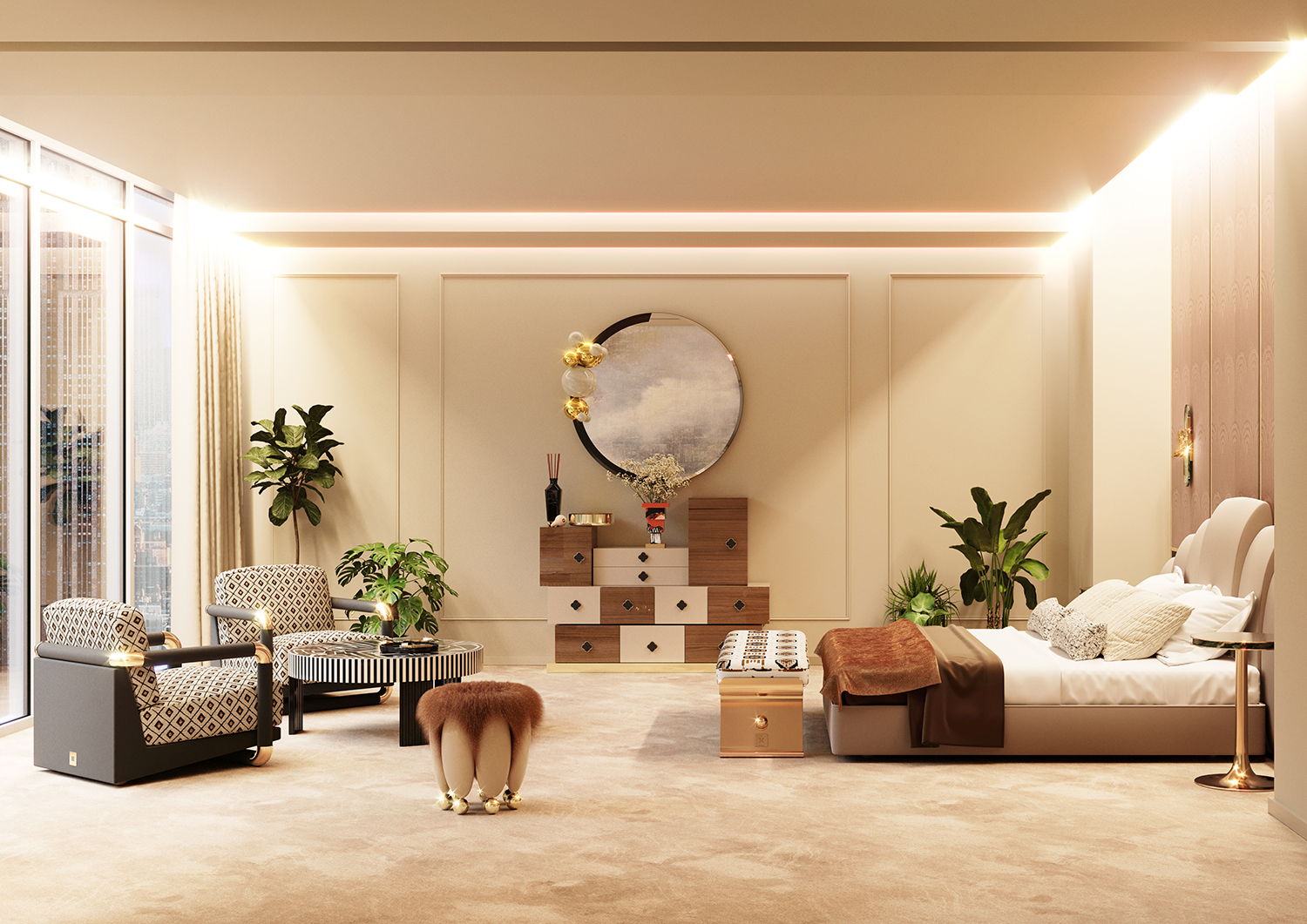Trust experts in miami luxury interior design for high-end home and commercial projects.
Trust experts in miami luxury interior design for high-end home and commercial projects.
Blog Article
Change Your Home With Crucial Concepts of Inside Design and Appearances
By recognizing the effect of color concept and the relevance of structure and patterns, one can create rooms that are not just visually enticing however also deeply personal. Accomplishing this equilibrium entails even more than mere decor; it includes a tactical setup and an eager understanding of how each component communicates within a space.
Comprehending Color Concept
Recognizing the principles of color concept permits designers to produce rooms that reverberate emotionally with passengers while meeting functional demands. Each group plays a crucial function in developing consistency within a room.
The psychological effect of colors is profound; cozy tones such as reds and oranges evoke energy and warmth, while trendy tones like blues and greens promote calmness and harmony. The use of complementary colors enhances visual interest, producing striking contrasts that can raise a space's charm.
Neutral colors, on the other hand, work as a flexible backdrop, enabling other design elements to shine. It is vital to think about aspects such as illumination and the space's function when choosing a color palette, as these can alter the perception of shades throughout the day.
Inevitably, a well-considered color design can change an area, fostering a sense of convenience and design that straightens with the occupants' preferences. Mastery of color concept is, consequently, a crucial skill for any interior developer aiming to create unified and inviting atmospheres.
Attaining Equilibrium in Style
Just how can developers accomplish a feeling of balance in their areas? Attaining equilibrium in design is essential to developing unified interiors. Developers can utilize 3 primary kinds of equilibrium: balanced, unbalanced, and radial. Symmetrical equilibrium includes organizing aspects evenly around a main factor, cultivating a sense of order and peace. This kind frequently includes pairs of furnishings or artwork, enhancing aesthetic stability.
Asymmetrical equilibrium, on the various other hand, depends on varying elements that still attain a cohesive appearance. This approach permits even more dynamic and casual arrangements, offering passion while preserving stability. By thoroughly choosing differing sizes, shades, and appearances, designers can produce an aesthetically compelling area that really feels balanced yet energetic.
Radial equilibrium stresses a central focal factor with components radiating outside. This design is commonly seen in circular formats, where furnishings and design produce a natural border that attracts the eye inward.
Eventually, accomplishing equilibrium calls for thoughtful consideration of scale, percentage, and the partnerships in between aspects. luxury interior design. By masterfully applying these balance principles, designers can change areas right into settings that really feel both cosmetically pleasing and functionally harmonious, enhancing the overall experience for residents
Significance of Spatial Understanding

An eager feeling of spatial awareness allows designers to identify focal points within a space, assisting the customer's focus to vital attributes while keeping a total feeling of unity. It additionally assists in the critical positioning of lights, which can dramatically influence the perception of space and state of mind. Recognizing spatial connections allows the designer to provide to the details requirements of residents, guaranteeing that each location offers its designated purpose without endangering appearances.
Eventually, spatial awareness is crucial for taking full advantage of the possibility of any kind of indoor space. By carefully taking into consideration the interaction between measurements, layout, and feature, developers can develop atmospheres that not only fulfill useful requirements yet also stimulate a sense of comfort and elegance, improving the total living experience.
Integrating Texture and Patterns
Accepting a diverse variety of textures and patterns can dramatically improve the aesthetic and tactile charm of an interior area. The strategic usage of various products-- such as timber, metal, textile, and stone-- produces deepness and interest, making a space really feel much more welcoming have a peek at this website and dynamic. For circumstances, combining smooth surfaces with harsh appearances can establish an equilibrium that attracts the eye and engages the detects.
When incorporating patterns, think about both range and repetition. Big patterns can offer as prime focus, while smaller, subtle styles can enhance various other elements without overwhelming the area. Layering patterns, such as pairing flower paddings with striped throws, adds intricacy and a feeling of consistency if executed thoughtfully.
It is likewise vital to keep a natural color palette, guaranteeing that textures and patterns interact instead of complete for interest. By choosing a few key appearances and patterns, you can develop a merged aesthetic that reflects your personal design while improving the overall setting of the area. Eventually, the cautious unification of these elements can change an ordinary area right into an advanced atmosphere rich with character and warmth.
Customizing Your Space
Developing a room that shows your personality is vital to attaining a really inviting setting. Personalization in interior style allows you to instill your special style and passions into your home, changing it from a mere shelter right into a haven that talks with who you are. Begin by picking a color scheme that resonates with your feelings-- strong hues can stimulate, while soft tones offer harmony.
Incorporate art work and decor that mirror your passions, whether it be traveling, nature, or abstract concepts. Showing individual collections, such as books, pictures, or souvenirs, can evoke valued memories and create centerpieces within a room. Furthermore, take into consideration personalizing useful pieces, like upholstered furniture, to straighten with your aesthetic preferences.

Conclusion
To conclude, the makeover of a home through the vital concepts of interior decoration and appearance requires a thorough understanding of color theory, balance, spatial understanding, structure, and customization. Each component adds significantly to creating an unified and useful living setting - miami luxury interior design. By attentively incorporating these principles, people can improve the visual charm and emotional resonance of their areas, eventually promoting a home that shows special identities while supplying comfort and functionality
Report this page